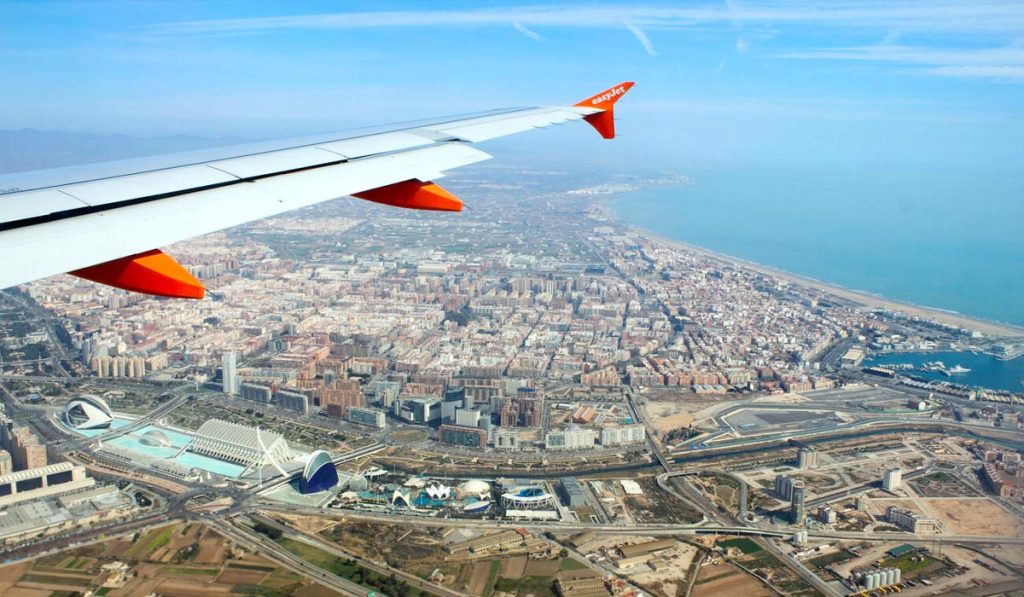
Spain. The very name conjures images of sun-drenched beaches, vibrant flamenco rhythms, rich historical tapestry, and a culinary scene that tantalizes the senses. From the Gothic grandeur of Barcelona to the Moorish splendor of Andalusia, and the lively energy of Madrid, Spain offers a kaleidoscope of experiences that cater to every traveler’s whim. And the best part? Experiencing this Mediterranean gem doesn’t have to break the bank. With a little savvy planning and a keen eye for deals, cheap flights to Spain are not just a dream, but a very achievable reality.
This comprehensive guide will equip you with everything you need to embark on your Spanish adventure without emptying your wallet. We’ll explore how to find those coveted cheap flights, delve into Spain’s captivating attractions, offer essential travel tips, illuminate accommodation and transportation options, and guide you towards the best time to visit.
The Art of the Deal: Scoring Cheap Flights to Spain

Related Articles about ¡Olé! Your Guide to Unearthing Cheap Flights to Spain and Experiencing its Enchanting Wonders:
- Jakarta: A Metropolis Unveiled – Your Comprehensive Guide to Exploring Indonesia’s Vibrant Capital
- Norway: A Symphony of Fjords, Lights, and Ancient Tales – Your Ultimate Travel Guide
- Kia Ora! Your Ultimate Guide to Journeying to the Land of the Long White Cloud: New Zealand
- Croatia: A Sun-Kissed Symphony of History, Beauty, and Adventure
- Sweden: A Symphony of Nature, History, and Innovation
The quest for cheap flights to Spain is an exciting treasure hunt, and with the right strategies, you’ll be well on your way to uncovering incredible deals.
- Flexibility is Your Friend: This is the golden rule of budget travel. If your travel dates are flexible, you’ll have a much easier time snagging cheaper fares. Mid-week flights (Tuesdays and Wednesdays) are often significantly cheaper than weekend departures. Similarly, consider flying during the shoulder seasons (spring and autumn) when demand is lower.
- Embrace the Shoulder Seasons: While summer in Spain is undeniably glorious, it’s also peak tourist season, leading to inflated flight and accommodation prices. Traveling in April, May, September, or October offers pleasant weather, fewer crowds, and considerably lower prices. The winter months can also offer exceptional deals, especially for city breaks.
- Be a Digital Nomad of the Skies: Utilize flight comparison websites and search engines relentlessly. Skyscanner, Google Flights, Kayak, and Momondo are your best allies. Set up price alerts for your desired routes; these platforms will notify you when prices drop.
- Consider Alternative Airports: Major Spanish cities like Madrid (MAD) and Barcelona (BCN) have the most direct flights, but often, flying into smaller, regional airports can be cheaper. Research airports within a reasonable distance of your intended destination and factor in the cost and time of onward travel. For instance, flying into Valencia (VLC) might be more affordable than directly into Barcelona, and the train journey is efficient.
- The Power of the Incognito Window: While debated, some travelers swear by searching for flights in incognito or private browsing mode. The theory is that websites might track your searches and increase prices if they see repeated interest. It’s a small effort that might yield surprising results.
- Book in Advance, But Not Too Far: Generally, booking flights 2-3 months in advance for international travel is a good sweet spot. Booking too early might mean missing out on promotional fares, while booking last minute is almost guaranteed to be expensive.
- Budget Airlines are Your Wingmen: Airlines like Ryanair, EasyJet, Vueling, and Wizz Air offer incredibly low fares on many routes to Spain. Be mindful of their baggage allowances, as extra charges can add up. Pack light to maximize your savings.
- Look for Package Deals: Sometimes, booking your flight and accommodation together through a travel agency or online platform can result in a discounted bundle.

Spain’s Irresistible Allure: Top Attractions to Explore
Spain’s charm lies in its diverse landscapes, rich history, and vibrant culture. Here are some of its most captivating attractions:
1. Barcelona: A Masterpiece of Modernism and Mediterranean Vibes
- Sagrada Familia: Gaudí’s unfinished basilica is an architectural marvel, a testament to his unique vision and a UNESCO World Heritage site. Book tickets well in advance!
- Park Güell: Another Gaudí creation, this whimsical park offers stunning city views and fantastical architecture.
- Gothic Quarter: Lose yourself in the labyrinthine medieval streets, discover hidden plazas, and soak in the historic atmosphere.
- Las Ramblas: This bustling pedestrian boulevard is a sensory overload of street performers, flower stalls, and lively cafes.
- Beaches: Barcelona boasts a beautiful urban coastline, perfect for a refreshing dip or a leisurely stroll.
2. Madrid: The Royal Heartbeat of Spain
- Prado Museum: Home to an unparalleled collection of Spanish art, including masterpieces by Goya, Velázquez, and El Greco.
- Royal Palace of Madrid: The official residence of the Spanish royal family, offering a glimpse into opulent history and grandeur.
- Retiro Park: A sprawling green oasis in the heart of the city, perfect for boating, picnicking, or simply enjoying the serenity.
- Puerta del Sol and Plaza Mayor: Vibrant public squares that are the social and historical epicenters of Madrid.
- Flamenco Shows: Experience the passion and soul of traditional Spanish dance in one of Madrid’s many tablaos.
3. Andalusia: The Soul of Moorish Spain
- Alhambra (Granada): This breathtaking palace and fortress complex is a UNESCO World Heritage site and a pinnacle of Moorish architecture. Book tickets months in advance!
- Mezquita-Cathedral of Córdoba: A stunning fusion of Islamic and Christian architecture, a truly unique historical monument.
- Alcázar of Seville: A magnificent royal palace renowned for its intricate tilework and lush gardens, a filming location for Game of Thrones.
- Plaza de España (Seville): A grand and picturesque plaza, perfect for a leisurely stroll or a romantic carriage ride.
- White Villages (Pueblos Blancos): Explore charming hilltop villages like Ronda and Mijas, with their whitewashed houses and stunning vistas.
4. Valencia: Where Innovation Meets Tradition
- City of Arts and Sciences: A futuristic architectural complex housing a science museum, opera house, and aquarium.
- Central Market: One of Europe’s largest and oldest food markets, a vibrant hub for local produce and culinary delights.
- Turia Gardens: A unique park created in the former riverbed, offering a green lung through the city.
- Paella: Valencia is the birthplace of paella, and indulging in an authentic version is a must.
5. The Balearic Islands (Mallorca, Ibiza, Menorca): Sun, Sea, and Serenity
- Mallorca: Offers a diverse landscape of stunning beaches, dramatic mountains, and charming villages.
- Ibiza: Famous for its vibrant nightlife, but also boasts beautiful coves, historic old towns, and a laid-back bohemian side.
- Menorca: A more tranquil and unspoiled island, known for its pristine beaches and prehistoric sites.
A Journey Through Time: A Glimpse into Spain’s Rich History
Spain’s history is a captivating saga of empires, cultural exchanges, and significant events that have shaped its identity.
- Prehistoric Roots: Evidence of early human habitation dates back thousands of years, with remarkable cave paintings found in places like Altamira.
- Roman Hispania: The Romans established a significant presence, leaving behind impressive infrastructure like aqueducts and amphitheatres.
- Moorish Influence (Al-Andalus): From the 8th to the 15th century, Islamic rule left an indelible mark, particularly in Andalusia, evident in its stunning architecture, scientific advancements, and cultural contributions.
- The Reconquista and Unification: The centuries-long Christian reconquest culminated in the unification of Spain under the Catholic Monarchs, Isabella I of Castile and Ferdinand II of Aragon, in 1492. This year also marked Columbus’s voyage, initiating the Spanish Empire.
- The Golden Age: The 16th and 17th centuries saw Spain rise as a global superpower, with flourishing arts and literature, producing literary giants like Cervantes.
- Decline and Modern Spain: Spain experienced periods of decline, civil war, and ultimately, a transition to democracy in the late 20th century, leading to the vibrant and diverse nation it is today.
Essential Travel Tips for the Savvy Spain Explorer
To make your trip to Spain as smooth and affordable as possible, keep these practical tips in mind:
- Learn a Few Spanish Phrases: While English is spoken in tourist areas, knowing basic Spanish phrases like "Hola" (Hello), "Gracias" (Thank you), "Por favor" (Please), and "Cuánto cuesta?" (How much does it cost?) will be greatly appreciated and enhance your interactions.
- Embrace the Siesta: Many smaller shops and businesses close for a few hours in the afternoon (typically between 2 pm and 5 pm). Plan your shopping and errands accordingly.
- Tipping Culture: Tipping is not as ingrained in Spain as in some other countries. For good service in restaurants, rounding up the bill or leaving a few extra euros is customary. For cafes and bars, leaving small change is sufficient.
- Stay Hydrated: Especially during the warmer months, carry a reusable water bottle and refill it whenever possible. Tap water is generally safe to drink in most cities.
- Be Aware of Pickpockets: Like any popular tourist destination, be vigilant in crowded areas, especially on public transport and in busy tourist spots. Keep your valuables secure.
- Embrace the Local Pace: Spaniards tend to enjoy a more relaxed pace of life. Don’t rush, savor your meals, and enjoy the moments.
- Book Popular Attractions in Advance: For iconic sites like the Alhambra or Sagrada Familia, booking tickets online weeks or even months ahead is crucial to avoid disappointment.
- Utilize Public Transportation: Spain has an excellent public transportation network, including efficient buses and metros in cities, and a comprehensive train system for intercity travel.
Accommodation Options: Rest Your Head Without Breaking the Bank
Finding affordable accommodation in Spain is achievable with a variety of options:
- Hostels: The ultimate budget-friendly option, offering dormitories and private rooms. They are also great for meeting fellow travelers. Many hostels in Spain are modern, clean, and offer excellent amenities.
- Budget Hotels and Guesthouses (Pensiones/Hostales): These offer basic but comfortable private rooms at reasonable prices. They are a step up from hostels and can be found in most cities and towns.
- Apartments and Vacation Rentals: Platforms like Airbnb and Booking.com offer a wide range of apartments, which can be ideal for longer stays or for groups, offering the flexibility of self-catering and potentially saving money on meals.
- Agroturismos (Rural Stays): For a more authentic experience, consider staying on a farm or rural estate, often offering charming accommodations and a taste of local life.
- Consider Staying Slightly Outside the City Center: While staying in the heart of a major city is convenient, accommodation prices often decrease as you move a few metro stops away. Ensure good public transport links.
Getting Around Spain: Navigating the Country on a Budget
Spain’s excellent infrastructure makes getting around both easy and affordable:
- Trains (Renfe): Spain’s national railway company, Renfe, offers an extensive network connecting major cities and towns. Booking tickets in advance, especially for high-speed AVE trains, can secure cheaper fares. Look out for promotions and rail passes.
- Buses: For shorter distances or to reach smaller towns not served by trains, buses are a reliable and often cheaper option. Companies like ALSA operate extensive routes.
- Budget Airlines: For longer distances within Spain, budget airlines can sometimes be surprisingly competitive with train fares, especially if booked in advance.
- Car Rental: If you plan on exploring rural areas or multiple smaller towns, renting a car can offer flexibility. However, factor in fuel costs, parking, and tolls.
- City Public Transport: Most Spanish cities have efficient metro systems, buses, and trams. Purchasing multi-day passes or rechargeable travel cards can be more economical than buying individual tickets.
- Walking and Cycling: Many Spanish cities are incredibly walkable and bike-friendly, offering a fantastic way to discover hidden gems and soak in the atmosphere without spending a dime.
The Best Time to Visit Spain: Balancing Weather and Value
The "best" time to visit Spain largely depends on your priorities, but here’s a breakdown to help you decide:
- Spring (April-May): This is an ideal time to visit. The weather is pleasantly warm, flowers are in bloom, and the crowds are still manageable. Prices for flights and accommodation are generally lower than in summer. It’s perfect for exploring cities and enjoying outdoor activities.
- Autumn (September-October): Similar to spring, autumn offers beautiful weather, with warm days and cooler evenings. The sea is still warm enough for swimming in coastal areas. This is another excellent time to find good deals on flights and accommodation.
- Summer (June-August): This is peak season, characterized by hot temperatures (especially inland) and large crowds. While the beaches are at their best, flight and accommodation prices will be at their highest. If you’re seeking a beach holiday and don’t mind the heat and crowds, booking well in advance is essential.
- Winter (November-March): While colder, winter offers a different kind of charm. Cities like Madrid and Barcelona are less crowded and can be enjoyed with fewer tourists. Skiing is possible in the Pyrenees. Prices for flights and accommodation are at their lowest, making it a fantastic time for budget travelers seeking city breaks and cultural experiences.
In conclusion, Spain is a destination that offers an incredible wealth of experiences for every type of traveler, and with a strategic approach to finding cheap flights and planning your trip, it’s an adventure that’s more accessible than you might think. Embrace the planning, be open to flexibility, and get ready to be captivated by the magic of Spain! ¡Buen viaje!





